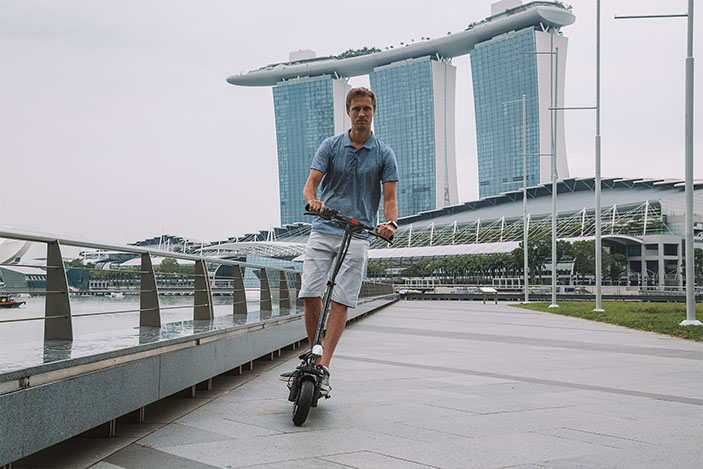WE ARE not moving enough. And we are moving too fast.
The issues of mobility and movement come to a head as a result of technology. We are slowing down in terms of the physical activity we are engaged in, but that doesn’t apply to e-scooters and the like on the road.
Following 358 surveys across 168 countries, including 1·9 million participants, the conclusions were that men in Southeast Asia were among the least physically active.
The World Health Organization (WHO) issued a warning that more than a quarter of people worldwide are not doing enough physical exercise. This figure has been standing still since 2001.
Updated data published in The Lancet Global Health show that 28% of the global population (approximately 1.4 billion people) are physically inactive.
With the proliferation of mobile devices, many would have thought that the number of people not moving would have gone up. Except maybe for active thumbs. But it’s good to bear in mind that the global population has grown.
These days the mundane — going to the bank, shopping for groceries and even working — are being handled generally from the comfort of a seat.
Worldwide, 25% of adults and 75% of adolescents (aged 11 to 17 years) do not meet WHO’s global recommendations for physical activity.
“As countries develop economically, levels of inactivity increase. In some countries, levels of inactivity can be as high as 70%, due to changing patterns of transportation, increased use of technology and urbanization,” according to the report, More Active People For A Healthier World.
You Might Also Like To Read:
The Report, based on comparative estimates, added that physical inactivity in adults is highest in the Eastern Mediterranean, the Americas, Europe and Western Pacific regions.
Physical activity is among the lowest in the Southeast Asia region.
The richer we get, the more lethargic we become.
The risks of inactivity are largely health related — type-2 diabetes, heart disease and some cancers.
Part of the solution is to walk or cycle more.
Mobility Measures
Which brings us to the recent Active Mobility Advisory Panel’s recommendations for the use of public paths. The AMAP proposed cutting the speed limit of personal mobility devices (PMDs) and bicycles from 15kmh to 10kmh on footpaths.
The recommendations have been accepted by the government and will be implemented in early 2019, according to the Ministry of Transport.

I fear it may not help very much. Everyone is in such a rush — pedestrians as well as those on PMDs — to get somewhere, they will try and find the quickest way to squeeze through to get ahead.
People are generally distracted by their conversations — be it with their fellow pedestrians or on their mobile devices — and are prone to unpredictable behaviour.
 Zippy Zebra Crossers
Zippy Zebra Crossers
Probably the one area that requires further investigation is the behaviour of PMD users at pedestrian crossings. To “stop and look” may not be adequate.
Why not have them dismount and walk especially at zebra crossings?
This will help to slow them down so they don’t wind up surprising motorists by zipping across the road. And it’s only fair that they are subjected to penalties if they fail to comply with this.
Besides being safer on the road, they will also get to move their limbs a bit more and help to improve our physical activity rating.
Images: Shutterstock.com





















